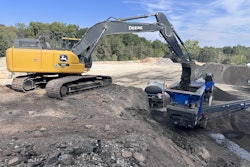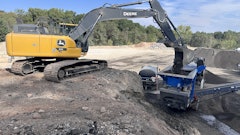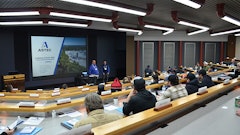
Global construction is at a turning point. Trillions are being invested to renew aging infrastructure and deliver the next generation of digital and physical assets – data centers powering the digital economy, transport networks connecting cities, hospitals caring for growing populations and homes for a changing world. Yet despite this unprecedented wave of investment, the industry remains constrained by fragmented communication and legacy practices that can no longer support its scale or ambition.
Demand for new assets is rising fast: technology companies are expected to invest more than $300 billion this year alone in data centers, with global digital infrastructure spending projected to surpass $1 trillion annually by 2029. Governments are also pouring billions into transport, housing, and energy projects, creating intense pressure to deliver faster and more predictably. The sector contributes around $13 trillion to global GDP today – projected to reach $22 trillion by 2040 – and employs millions worldwide.
Yet productivity and innovation have not kept pace with the industry's growing scale and complexity. 92% of AECO professionals experience significant budget changes once construction begins, with most projects running 11-20% above original estimates. Delays, rework, and escalating costs remain common, driven by disconnected technologies and outdated coordination methods.
The issue isn’t ambition or funding. It’s that too many projects are still managed with tools designed for a different era. Research shows 27% of construction professionals rely on email, spreadsheets, and PDFs as their primary coordination tools. On multi-billion-dollar projects, that dependence on analog leads to duplication, missed opportunities, and preventable rework. The challenge isn’t the people, it’s the systems they’re working with.
Over the last two decades, the AEC industry has undergone a digital transformation that continues to accelerate. Today, the coordination challenges of megaprojects – from billion-dollar urban developments to national infrastructure initiatives – demand tools and workflows that break down silos and unify teams. Whether renovating historic landmarks or delivering high-stakes energy projects, the pressure to deliver on time, on budget and without rework has never been higher.
Recent innovations in construction technology are reshaping how these projects are executed. Platforms that can manage massive, federated models and seamlessly integrate 2D and 3D workflows are enabling teams to make decisions with greater speed and clarity. This is particularly critical when managing vast amounts of model data across multiple disciplines and geographies – a scenario that’s becoming more common as project complexity grows. Templates and automated workflows allow organizations to standardize what works, so lessons from one project can immediately inform the next.
A promising development is the convergence of drawings and models in real-time. The ability to view both side by side, complete with issues and markups, offers much-needed context and reduces the risk of miscommunication. Similarly, automation is beginning to play a larger role in coordination – helping teams route, escalate, and close issues based on predefined rules. This kind of process consistency not only reduces delays but frees up capacity for higher-value work.
Close collaboration between technology developers and practitioners in the field is also vital. Feedback loops – whether through user groups, beta programs, or hands-on workshops – ensure that digital tools address real-world challenges rather than theoretical ones. When product development is grounded in daily site experience, the result is better alignment between what teams need and what technology delivers.
Early adopters are already reaping the benefits. Coordination meetings that once took hours are now resolved in a fraction of the time. Recurring issues that once slipped through the cracks are now automatically tracked and resolved. When teams can access the same data in the same space, with shared visibility and accountability, coordination stops being a bottleneck – and starts becoming a competitive advantage. Better collaboration produces safer builds, fewer defects, and less waste. Roads reopen sooner. Hospitals and schools open on schedule. The infrastructure that powers modern life – from renewables to hyperscale data centers – becomes more resilient and sustainable.
Ultimately, meeting global infrastructure demand requires a collective movement from static coordination to connected collaboration; a shared environment where every drawing, model, issue, and schedule exists in real-time as a single source of truth for owners, designers, and contractors alike. With greater visibility, project teams can plan more accurately, manage risks earlier, and avoid the start-stop cycles that drive budget and timeline overruns. Construction is foundational. It delivers the systems that societies depend on every day. For too long, the industry’s progress has been limited by its reliance on analog tools. The technology to change that already exists. What’s needed now is the collective will to use it – consistently, collaboratively and at scale.




















